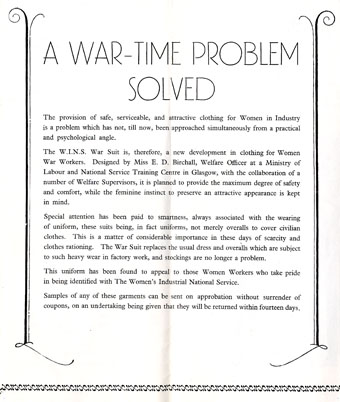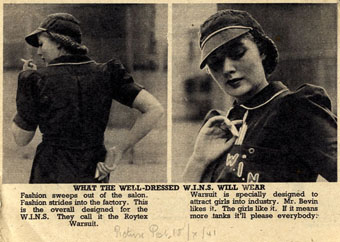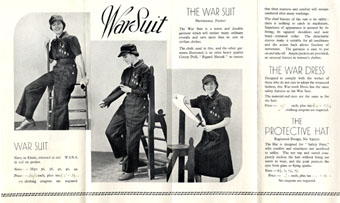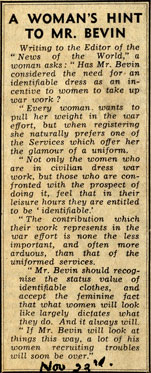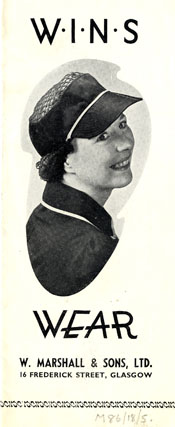Image 1 - A war-time problem solved
The provision of safe, serviceable and attractive clothing for Women in Industry is a problem which has not, till now, neem approached simultaneously from a practical and psychological angle.
The W.I.N.S. War Suit is, therefore, a new development in clothing for Women War Workers. Designed by Miss E. D. Birchall, Welfare Officer at a Ministry of Labour and National Service Training Centre in Glasgow, with the collaboration of a member of Welfare Supervisors, it is planned to provide the maximum degree of safety and comfort, while the feminine instinct to preserve an attractive appearance is kept in mind.
Special attention has been paid to smartness, always associated with the wearing of uniform, these suits being, in fact uniforms, not merely overalls to cover civilian clothes. This is a matter of considerable importance in these days of scarcity and clothes rationing. The War Suit replaces the usual dress and overalls which are subject so such heavy wear in factory work, and stockings are no longer a problem.
This uniform has been found to appeal to those Women Workers who take pride in being identified with The Women’s Industrial National Service.
Samples of any of these garments can be sent on approbation without surrender of coupons, on an undertaking being given that they will be returned within fourteen days.
Image 2 - What the well-dressed W.I.N.S will wear
A printed article with two photographs of a woman wearing the W.I.N.S. War Suit and Protective Hat. The article reads: “What the well-dressed W.I.N.S. will wear. Fashion sweeps out of the salon. Fashion strides into the factory. This is the overall designed for the W.I.N.S. They call it the Roytex Warsuit. Warsuit is specially designed to attract girls into industry. Mr Bovin likes it. The girls like it. If it means more tanks it’ll please everybody.
Image 3 - War Suit
A printed pamphlet advertising the War Suit. Two black and white photographs show a woman modelling the War Suit, and a third photograph shows a woman wearing the War Dress. In all three photographs the women are wearing a co-ordinating cap. The paragraph headings in the pamphlet are ‘War Suit’, ‘The War Suit’, ‘The War Dress’ and ‘The Protective Hat’.
